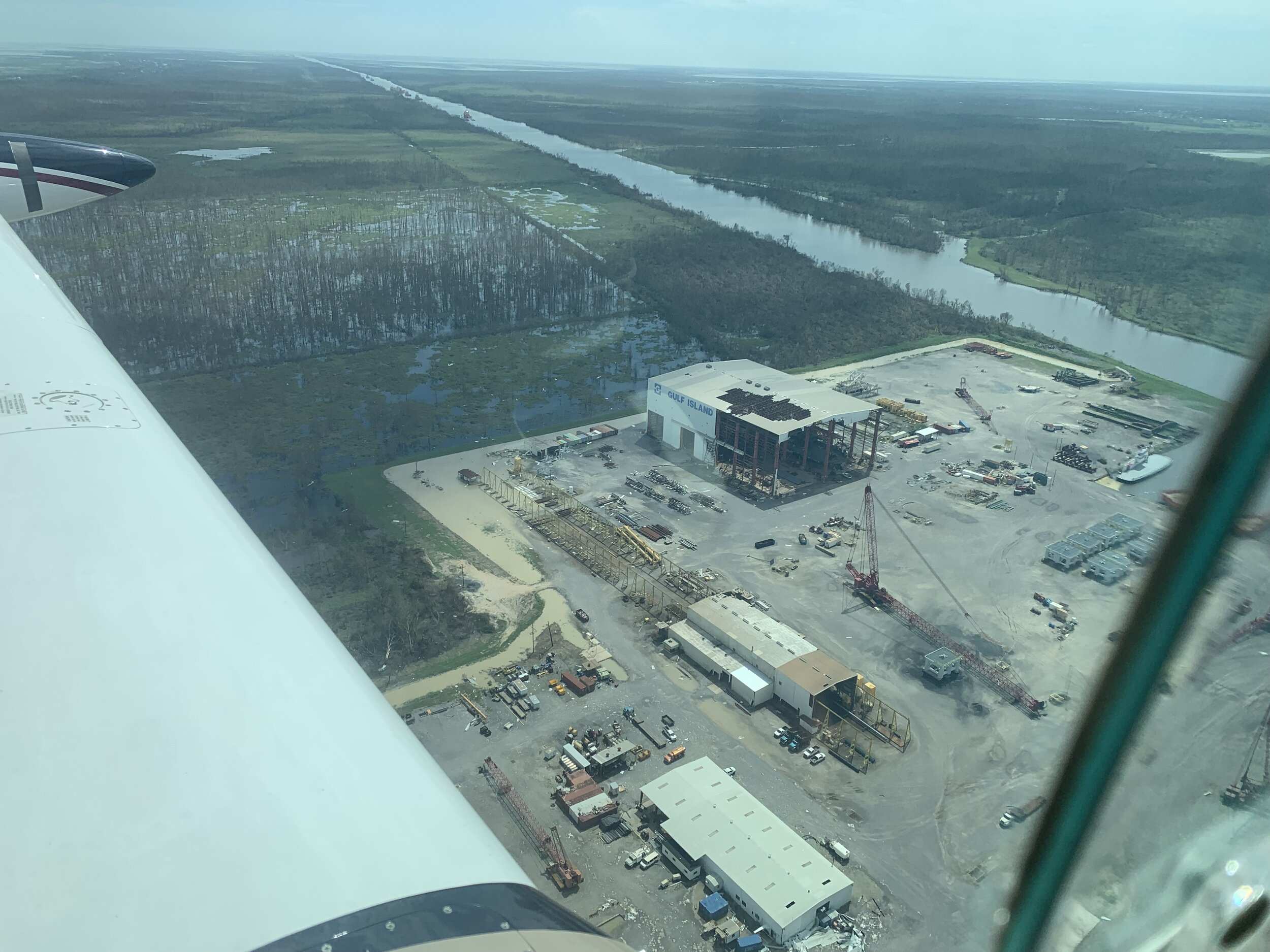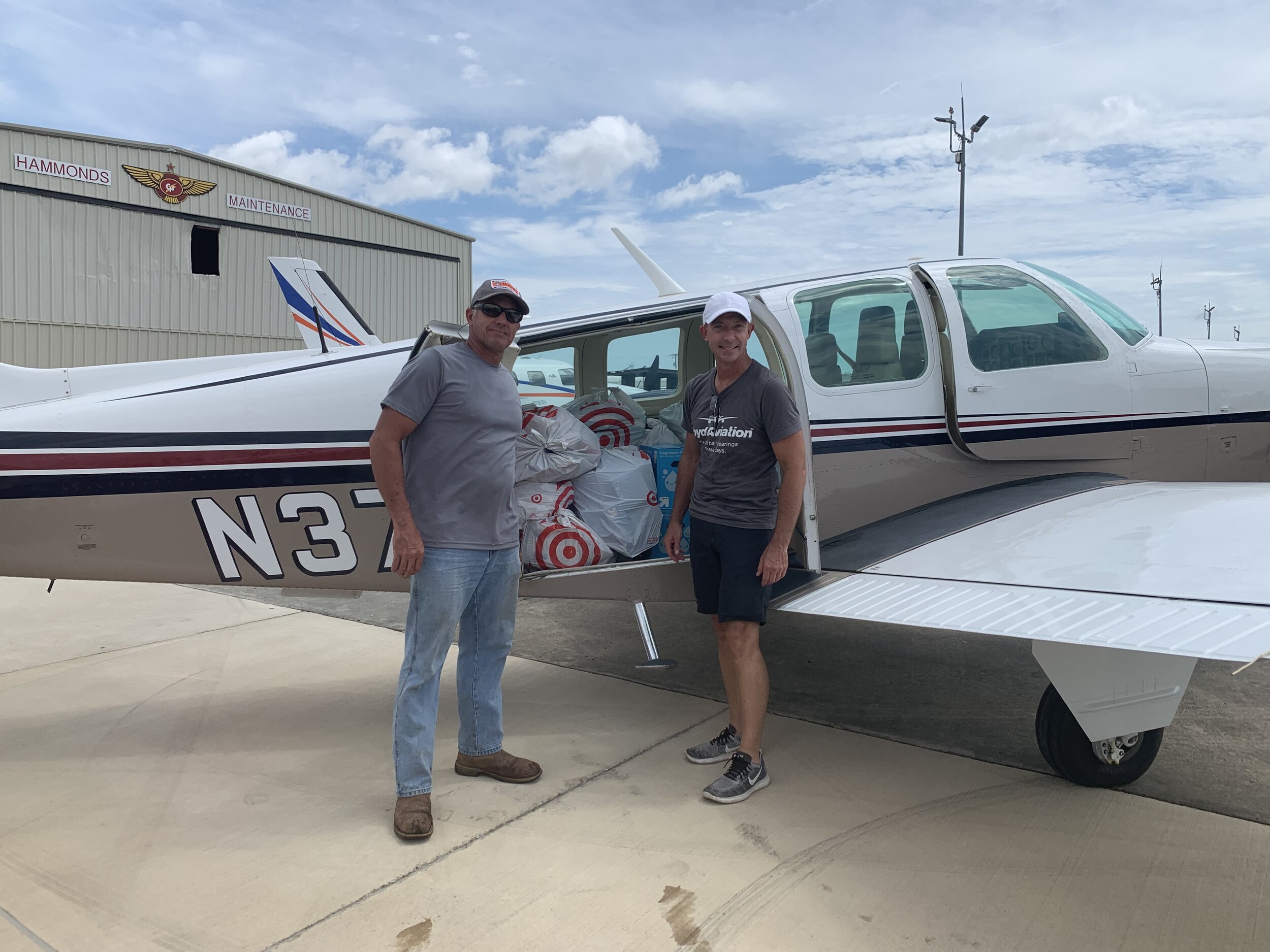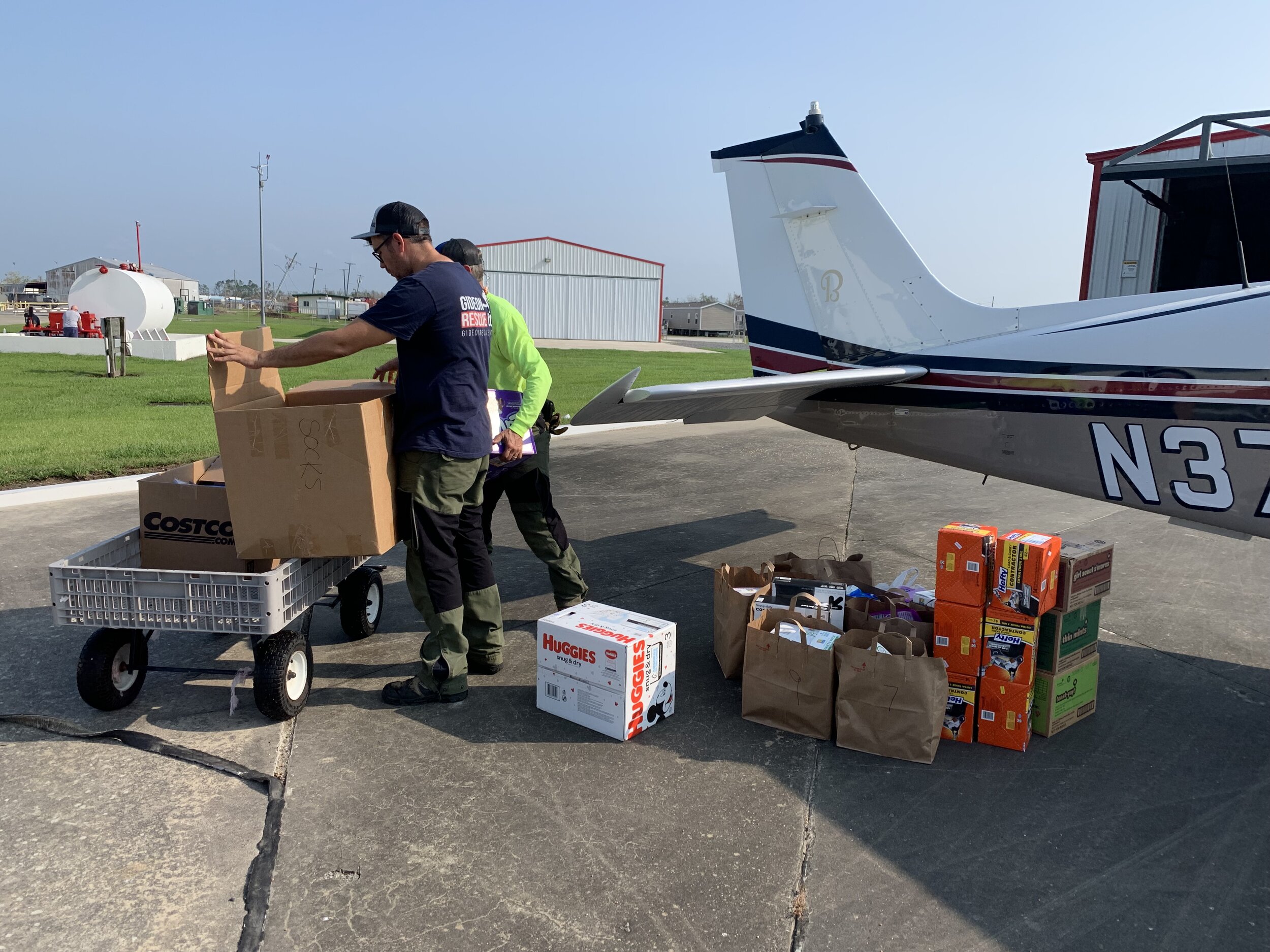Hurricane Ida Relief!
On August 29, 2021, Hurricane Ida made landfall near Port Fourchon, Louisiana, as a Category 4 storm with maximum sustained winds of 150mph. A huge swath of southern Louisiana lost power (nearly a million people), lost cell phone service, was underwater, and/or had the rooves ripped off their houses, businesses and hospitals. Ida tied Laura (2020) for the strongest storm ever to hit Louisiana and ranks as the fifth strongest ever to hit the U.S. Ida darkened the coast on the 16th anniversary of one of the deadliest U.S. storms in history, Louisiana’s Hurricane Katrina.
Hurricane Ida Radar Image, 8/29, 2 p.m.
It’s difficult to overstate Katrina’s impact on Louisiana: not just the immediate infrastructure damage and loss of life, but the permanent displacement of 800,000 people and the spawning of systemic civil unrest, health crises, and economic and political upheaval. But some good came out of it: Katrina saw the organization and rise of numerous private relief groups dedicated to providing immediate on-the-ground assistance in the wake of major storms. Perhaps the most famous is the Cajun Navy, which has grown from 300 folks with mosquito boats rescuing flood victims during Katrina in 2005 to dozens of so-named 501(c)(3) charities supporting the veritable armada that sailed in 2017 in response to Hurricane Harvey.
Also arising from the widespread devastation of Katrina was AERObridge, a group that coordinates donated aircraft to provide an immediate aerial supply-chain response to disaster areas before those areas are generally accessible by road. Much like the Cajun Navy, AERObridge and its volunteer pilots can coordinate an airlift rapidly and often much faster than larger organizations. In addition to Katrina, they’ve provided relief efforts in Haiti, Japan, for Sandy, and many other natural disasters. I’m a big fan of theirs and flew for them for Hurricane Harvey.
And so, less than 48 hours after Ida’s landfall, I found myself aloft with a plane stuffed full of emergency supplies, headed for the heart of the disaster, Houma, LA. After AERObridge had announced its planned activation for Ida, I’d solicited supplies (and pal Michele Marvin had shopped with donations), and we were ready to go the moment AERObridge gave the word. There was no power in Houma, the tower at the Houma airport (KHUM) couldn’t operate, there was no air traffic control (New Orleans approach control was knocked out), and no weather radar. But AERObridge’s awesome Leigh Ann Swihart confirmed for me that someone had swept the runway for debris, and off we went!
Loading supply flights is a challenge, because ideally you load the plane to its maximum weight. In addition to the overall weight limit, there are sub-limits for certain parts of the plane. There was no guarantee there’d be fuel available in Houma (or power to pump it), so I had to carry enough gas to get both in AND out of Houma. Planes also misbehave if the load isn’t balanced, especially when loaded too far aft. (I fixed that on the first flight by loading 100lbs of dog food in the co-pilot seat. Having my younger son Sam as co-pilot on the third flight made balancing the load much easier.) The balance changes as fuel burns, too, so there’s some math involved. Preflight loading before my weight’s in the plane is further trickery. Finally, it’s also satisfying to fill the plane’s volume, so picking the right mix of dense (e.g. batteries), medium (e.g. baby food) and light (e.g. diapers) supplies takes some planning.
Once loaded, it’s game time. A fully loaded plane (and a hot day) require more runway, all calculable ahead of time. Once in the air, like Angel Flight, AERObridge provides its pilots with unique call signs (I’m “Aerobridge 1778”). Those identify us as relief flights and usually result in mildly preferential treatment from air traffic control as well as allow ground crews to monitor estimated arrival times on FlightAware. There were still storms in the area on all three flights, as there are almost every summer day along the Gulf Coast. Without weather radar, the trusty ol’ cathode-ray-tube Stormscope helpfully painted the weather to avoid. The direct route from Houston Southwest Airport (KAXH, my home field) to the Houma (KHUM) and Galliano (KGAO) airports goes just a little too far off the coast for my taste, so each flight bent a little northward abeam Lake Charles.
The old school Stormscope paints weather trouble along the LA coast
Scattered storms across the AXH-HUM route
I ended up being the first AERObridge supply plane into Houma, and gave a requested phone report to AERObridge’s operations folks. KHUM looked like a war zone. Not just because everything was busted (and it was), but also because the Coast Guard and National Guard were staging search and rescue missions from Houma. Although the runway and taxiways were clear, many of the parking ramps were scattered with glass from broken windows. Avoiding all that, I taxied to my ground contact, who was right where he was supposed to be. Within 48 hours of landfall, the Houma Community Center had its first AERObridge-delivered supplies!
The volunteer ground crews that unloaded supplies from my two flights to Houma and third flight to nearby Galliano were supremely helpful. They’re mostly residents themselves of this disaster area, taking time from their own personal clean-ups to help their community any way they can. They were supremely thankful, too. But they’re also under a lot of stress, and sometimes, understandably, that leaked out: unloading the first flight, amidst some solid TX-LA camaraderie about humidity and college football, one volunteer out of nowhere shouted, “Fuck Biden!” I wasn’t sure what to do with that, but I saved my lecture on what causes hurricanes for another time…. Unloading my next flight, a volunteer gathered everyone round to pray for my safe return. It was a touching gesture.
One particular volunteer had some fun comments about our choice of cargo. Sam had asked his school for donations. On short notice, the school donated (in addition to hundreds of individually-wrapped COVID-related care packages) a GIANT box of new, long socks. To me, those seemed far down the list of emergency needs, but we took them. Turns out we hit the jackpot!
It was great to have Sam join me for the flight to Galliano. In 2017, he lived through the flooding caused by Hurricane Harvey, but this was his initial first-hand view of the destruction wreaked by the 150-mph winds of a major hurricane. He, too, was happy to help in any way he could.
Sam about to load up for Galliano
AERObridge’s ability to organize quickly is key. Unlike road-wrecking storms like Harvey, fast-moving storms like Ida create only slim windows where supply airlifts make sense (i.e. that time before trucked relief arrives). Our window was extended because southern Louisiana’s basically a swamp: Houma airport’s at elevation 9’, and Galliano sits literally at sea level, i.e. elevation 0’. In fact, one of the first-requested items were tire patch kits needed for road travel given the flotsam marring the roads.
But the roads eventually fully opened, and last night, a week after Ida’s landfall, AERObridge packed up its staging operations in Beaumont and Pensacola, having coordinated almost a hundred flights and delivered uncounted tons of supplies to southern Louisiana.
My own part in AERObridge’s mission owes a big thanks to my friends and family who donated money and/or dropped supplies at our house; to Michele Marvin and Stacy Humphries for their shopping efforts; to Tom and Jenifer Pekar for opening their hangar and helping me prep in the wee hours; to Leigh Ann Swihart and all the good folks at AERObridge; to Len and the folks at Houston Southwest Airport for their help and fuel discounts; to all the ground volunteers; and to Sam for his help.
As I write this, more than half a million in Louisiana remain without power, and the Ida death toll continues to rise (both in LA and in the northeast). Hopefully we made a small dent in the misery.















